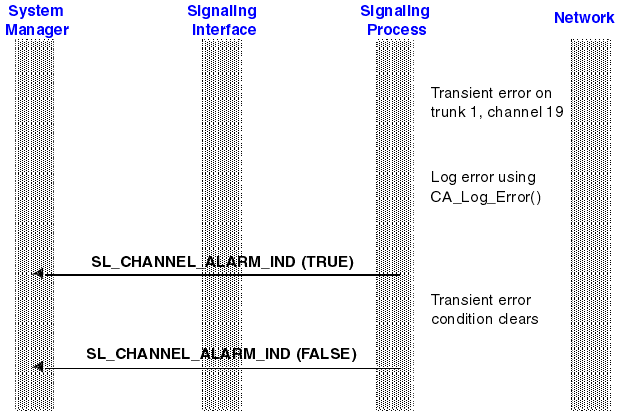This section describes the sequence of events involved when there is a transient error on a CCS trunk affecting a single channel.
Figure 1 shows the following events:
Figure 1. Transient error on a CCS trunk affecting a single
channel


- A trunk is enabled, and there are active calls on the trunk.
- The signaling process detects a network condition that means that a single channel on the trunk is temporarily unavailable for use. Or, the signaling process detects a transient internal error that affects a single channel.
- The signaling process logs an error using CA_LOG_ERROR().
- The signaling process places the channel in the alarm state by sending the SL_CHANNEL_ALARM_IND primitive with fAlarm set to TRUE.
- The channel is now alarmed.
- When the signaling process detects that the alarm condition has passed, it removes the channel from the alarm state by sending SL_CHANNEL_ALARM_IND with fAlarm set to FALSE.